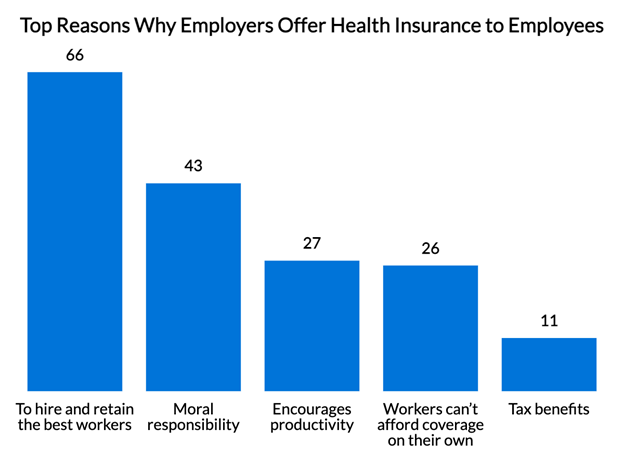6 Simple Techniques For Medicare Advantage Agent
6 Simple Techniques For Medicare Advantage Agent
Blog Article
Getting My Medicare Advantage Agent To Work
Table of ContentsSome Known Facts About Medicare Advantage Agent.Our Medicare Advantage Agent StatementsMedicare Advantage Agent Things To Know Before You Buy
follows from perplexing the reasonably young age profile of the without insurance with the far better health and wellness, typically, of more youthful persons. This obscures the web link between health and wellness condition and wellness insurance coverage. For those without accessibility to work environment health insurance policy, poor wellness is a prospective obstacle to acquiring nongroup protection because such protection may be very valued, exclude preexisting problems, or be simply inaccessible. The variety of without insurance Americans is not particularly big and has not transformed in recent years. 7 out of 10 respondents in an across the country representative survey assumed that fewer Americans lacked medical insurance than actually do(Fronstin, 1998). Approximately fifty percent(47 percent )believed that the variety of individuals without medical insurance decreased or stayed continuous over the last fifty percent of the last decade(Blendon et al., 1999). This drop of practically 2 million in the variety of individuals 'without insurance (a decrease
of around 4 percent)is absolutely a positive change. With a softer economic climate in 2000 the most recent reported gains in insurance policy protection might not proceed(Fronstin, 2001 ). The decline in the number of uninsured will certainly not proceed if the economic situation remains sluggish and health and wellness treatment expenses continue to exceed rising cost of living. This is because the data were collected for a period of strong economic efficiency. Of the approximated 42 million individuals that were uninsured, all yet concerning 420,000(concerning 1 percent)were under 65 years old, the age at which most Americans become eligible for Medicare; 32 million were grownups between ages 18 and 65, around 19 percent of all grownups in this age team; and 10 million were youngsters under 18 years of age, about 13.9 percent of all children (Mills, 2000). These estimates of the number of persons uninsured are produced from the yearly March Supplement to the Current Populace Study (CPS), carried out by the Census Bureau. Unless otherwise kept in mind, nationwide estimates of people without wellness insurance coverage and percentages of the populace with various type of insurance coverage are based upon the CPS, one of the most extensively made use of resource of quotes of insurance coverage and uninsurance prices. These studies and the quotes they generate are described briefly in Table B. 1 in Appendix B - Medicare Advantage Agent. These studies vary in dimension and sampling approaches, the questions that are asked concerning insurance
Examine This Report about Medicare Advantage Agent
coverage, and the moment period over which insurance policy coverage or uninsurance is determined(Lewis et al., 1998, Fronstin, 2000a ). Still, the CPS is especially valuable since it generates annual price quotes relatively rapidly, reporting the previous year's insurance protection estimates each September, and due to the fact that it is the basis for a consistent collection of estimates for greater than 20 years, enabling analysis of patterns in coverage in time.

Little Known Facts About Medicare Advantage Agent.
Over a three-year duration starting early in 1993, 72 million individuals, 29 percent of the U.S. population, lacked protection for at the very least one month. Within a solitary year(1994), 53 million people experienced at the very least a month without insurance coverage(Bennefield, 1998a). Six out of every 10 uninsured grownups are themselves utilized. Although functioning does enhance the possibility that and one's member of the family will have insurance, it is not a warranty. Even participants of families with 2 permanent breadwinner have virtually a one-in-ten chance of being uninsured (9.1 percent uninsured rate)(Hoffman and Pohl, 2000 ). The connection in between medical insurance and access to care is well developed, as documented later in this phase. The partnership between wellness insurance coverage and health results is neither direct neither basic, an extensive medical and health and wellness solutions research literature links health insurance coverage
to improved access accessibility care, better quality, and improved personal and population populace wellnessStanding The second record, on individual health results for uninsured grownups, is stood for by the inner circle of the figure, while the third record, on household wellness, includes the subjects of the 2nd record but emphasizes a various system of analysis, particularly, the family. The sixth report in the series will certainly provide information about approaches and campaigns carried out locally, statewide, or nationally to resolve the lack of insurance and its damaging effects. Levels of analysis for analyzing the results of uninsurance. This conversation of health insurance policy coverage concentrates mainly on the U.S. populace under age 65 because basically all click to investigate Americans 65 and older have Medicare or various other public insurance coverage.
It concentrates particularly on those without any kind of health and wellness insurance policy for any length of time. The problems dealt with by the underinsured remain in some aspects comparable to those faced by the uninsured, although they are normally much less serious. Uninsurance and underinsurance, nevertheless, include noticeably various policy issues, and the strategies for addressing them might vary. Throughout this research and the 5 records to adhere to, the primary emphasis is on persons without any medical insurance and therefore no help in spending for health and wellness care beyond what is available via charity and safeguard organizations. Medical insurance is a powerful factor affecting invoice of care because both patients and medical professionals react to the out-of-pocket cost of solutions. Medical insurance, however, is neither necessary neither adequate to access to medical solutions. However, the independent and straight impact of health
insurance policy coverage on accessibility to wellness services is well established. Others will certainly get the health and wellness treatment they need even without wellness insurance, by spending for it out of pocket or seeking it from companies that use care complimentary or at highly subsidized click to read more rates. For still others, medical insurance alone does not guarantee invoice of treatment since of various other nonfinancial barriers, such as an absence of health treatment providers in their area, limited accessibility to transportation, illiteracy, or etymological and cultural distinctions. Official research regarding uninsured populaces in the United States dates to the late 1920s and early 1930s when the Board on the Cost of Medical Treatment generated a series of records concerning funding doctor workplace visits and hospital stays. This concern became prominent as the varieties of clinically indigent climbed during the Great Anxiety. Empirical researches consistently support the link in between access to care and boosted wellness outcomes(Bindman et al., 1995; Starfield, 1995 ). Having a routine source of care can be taken into consideration a forecaster of access, instead of a direct step of it, when health results are themselves used as accessibility indicators. This extension of the concept of gain access to measurement was made by the IOM Board on Checking Accessibility to Personal Healthcare Provider(Millman, 1993, p. Whether moms and dads are insured shows up to impact whether or not their kids get care in addition to how much careeven if the kids themselves have protection(Hanson, 1998). The health and wellness of parents can affect their ability to care for their children and the degree of family members stress and anxiety. Bothering with their kids's access to care is itself a source of stress and anxiety for parents. 3 phases adhere to in this report. Phase 2 provides a review of exactly how employment-based health and wellness insurance, public programs and specific insurance coverage run and connect to supply substantial however incomplete insurance coverage of the U.S. population. This includes a testimonial of historical fads and public laws impacting both public and private insurance policy, a conversation of the interactions amongst the different kinds of insurance policy, and an evaluation of why people move from one program to another or wind up

Report this page